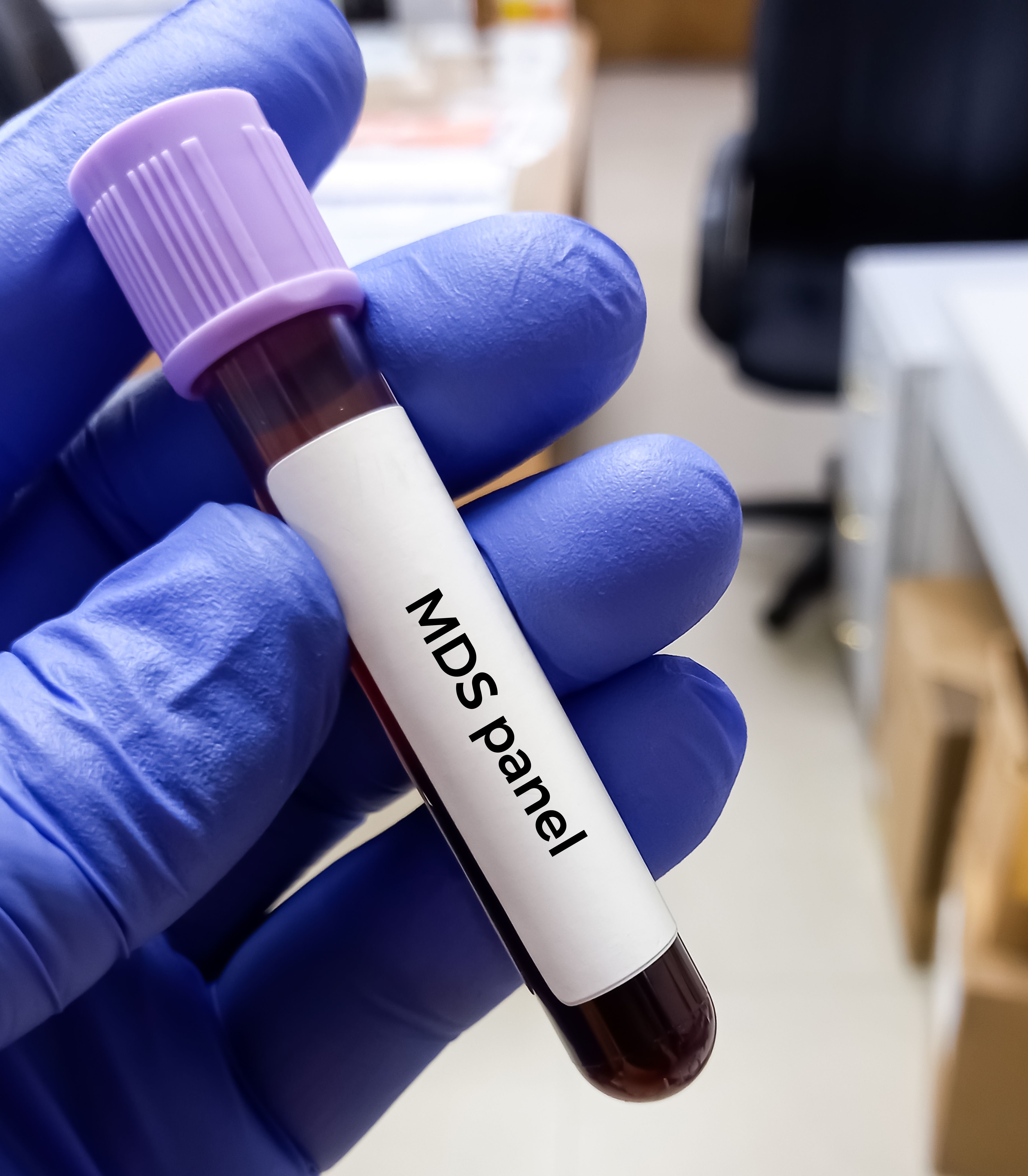- Center on Health Equity and Access
- Clinical
- Health Care Cost
- Health Care Delivery
- Insurance
- Policy
- Technology
- Value-Based Care
Venetoclax Resistance in Patients With MDS Explained in New Study
The report offers new insights into the limits of the BCL2 inhibitor among patients who have myelodysplastic syndromes.
A new report explains why patients with myelodysplastic syndromes (MDS) become resistant to second-line therapy with venetoclax (Venclexta; Abbvie/Genentech).
Writing in Nature Communications, investigators said they identified “an expansion of MDS hematopoietic stem cells (HSCs) with a granulo-monocytic–biased transcriptional differentiation state in MDS patients who initially responded to venetoclax but eventually relapsed.”
The findings could help drug developers take the next step toward finding more durable therapies for this hard-to-treat patient group.
Blood sample for MDS test
Image credit: MdBabul - stock.adobe.com

The study authors said the HSC hierarchy of MDS can be predictive of disease progression and help guide the choice of a second-line therapeutic after the failure of frontline therapy. Previous research by the same team showed that contrasting patterns of HSC differentiation were associated with different outcomes. For instance, patients on venetoclax-based therapy who had an immunophenotypic “common myeloid progenitor” (CMP) pattern of differentiation achieved complete remission more quickly and had longer recurrence-free survival compared with patients with a granulocytic-monocytic progenitor (GMP) pattern of differentiation. The authors said the reason was that venetoclax, a selective BCL2 inhibitor, can only efficiently target HSCs with a CMP pattern because those cells’ survival is BCL2 dependent.
Still, that benefit is short lived.
“MDS patients eventually failed venetoclax-based therapy after a short period of time,” the authors noted. That’s why they undertook the current study to look at the cellular and molecular underpinnings of venetoclax failure in MDS.
The investigators examined samples taken from patients who received venetoclax therapy at MD Anderson as part of 1 of 3 phase 2/3 clinical trials of the therapy. They found that all patients with a CMP pattern who had an initial response eventually lost that response and/or progressed to acute myeloid leukemia (AML). Those findings were later confirmed in a larger cohort, including 12 patients with a CMP pattern and 16 patients with a GMP pattern.
When investigators delved deeper, they found important differences among the 6 patients with the CMP pattern.
“These analyses showed that the ‘CMP pattern’ immunophenotypic architecture and the hematopoietic stem and progenitor cell (HSPC) transcriptomic signature persisted at disease recurrence in the 3 patients with TP53 mutations (UPN#3, UPN#4, and UPN#6), which is consistent with previous findings that TP53 mutations confer an intrinsic resistance to BCL2 inhibition,” they wrote.
In the other 3 patients, though, the HSPC hierarchy switched to a GMP pattern.
“In all 3 patients, this immunophenotypic hierarchical change was associated with the acquisition or selection of clones with STAG2 or RUNX1 mutations, which we previously found to be enriched in ‘GMP pattern’ MDS,” they wrote.
This change was associated with treatment failure.
“While MDS HSCs in an undifferentiated cellular state are sensitive to venetoclax treatment, differentiation towards a granulo-monocytic–biased transcriptional state, through the acquisition or expansion of clones with STAG2 or RUNX1 mutations, affects HSCs’ survival dependence from BCL2-mediated anti-apoptotic pathways to TNFα-induced pro-survival NF-κB signaling and drives resistance to venetoclax-mediated cytotoxicity,” the authors explained.
Putting their findings in context, the investigators noted that only about half of patients with MDS see improvement after first-line therapy with hypomethylating agents (HMAs). Yet, even those patients whose disease responds to therapy eventually experience therapy resistance.
“Patients with HMA-resistant MDS develop progressive cytopenias or secondary AML and have a median survival duration of only 4-6 months,” they wrote.
The authors said their findings help explain the molecular reasons venetoclax-based therapy is eventually rendered ineffective in patients with MDS. They said physicians who prescribe venetoclax-based therapy to patients with MDS should closely monitor the patients for clones of STAG2 or RUNX1 mutations, and enroll those patients “in clinical trials of agents targeting NF-κB signaling effectors, such as MCL1, before their disease undergoes HSC transcriptional reprogramming and becomes resistant to venetoclax.”
Reference
Rodriguez-Sevilla JJ, Ganan-Gomez I, Ma F, et al. Hematopoietic stem cells with granulo-monocytic differentiation state overcome venetoclax sensitivity in patients with myelodysplastic syndromes. Nat Commun. 2024;15(1):2428. doi:10.1038/s41467-024-46424-3
